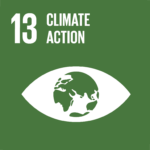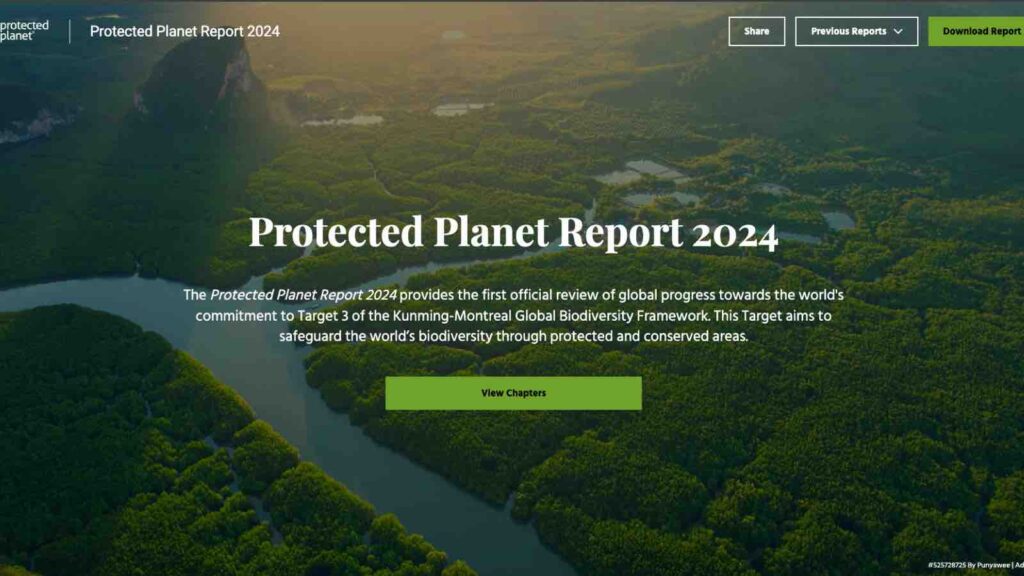Currently, only 17.6 per cent of land and inland waters and 8.4% of ocean and coastal areas are within documented protected and conserved zones.
At the 16th UN Conservation Summit in Colombia, the United Nations Environment Programme (UNEP) and the International Union for Conservation of Nature (IUCN) released the Protected Planet Report 2024. This critical assessment examines progress on the ambitious global goal to protect 30% of Earth’s land and seas by 2030, a target set to combat biodiversity loss and sustain critical ecosystems. The report reveals that while steps have been made, they fall far short of the transformative scale needed, with 17.6% of land and inland waters and 8.4% of oceans currently protected. Meeting the “30 by 30” target will require doubling land protections and tripling ocean protections over the next six years.
RELEVANT SUSTAINABLE GOALS



Shortfalls and Missed Opportunities: A Race Against Time
Since 2020, an area of protected land and water twice the size of Colombia has been added to the world’s conservation map. However, this increase represents only a marginal 0.5% growth on land and in the ocean, underscoring a concerning lack of momentum. By 2030, protected land must expand by another 12.4%, while ocean conservation must increase by 21.6%, an area larger than the Indian Ocean. “It is essential that protected and conserved areas reach the 30% target by 2030, but equally important that these areas are effective and do not negatively impact the people who live in and around them,” said Inger Andersen, UNEP’s Executive Director.
Barriers to Effective Conservation: Gaps in Data, Governance, and Impact
The report underscores that current protections are not always located in the regions with the most urgent need for conservation. Alarmingly, only 20% of areas essential for biodiversity are fully protected, leaving one-third of these critical regions unprotected. A mere 1.3% of marine areas and 5% of terrestrial areas have been evaluated for management effectiveness, posing risks to both biodiversity and the people who depend on these ecosystems. Governance is also a weak point: fewer than 4% of protected areas are overseen by Indigenous communities, whose stewardship has been proven vital for sustainable conservation.
“Indigenous Peoples and local communities are often the most effective custodians of their lands,” said IUCN Director General Grethel Aguilar. “The window is closing for us to equitably and meaningfully conserve 30% of the Earth, but it remains achievable if the international community works together.”
Progress Made, but the Road Ahead Remains Long and Challenging
Despite slow progress, 51 countries and territories have exceeded 30% land coverage, and 31 have done the same at sea, illustrating the power of national action and potential for replication. The report’s findings offer both a stark warning and a baseline for action, noting that sustained cross-border cooperation, inclusive conservation practices, and equitable resource management are essential to reaching the “30 by 30” target. This includes supporting Indigenous communities in their role as stewards of biodiversity.
“The ‘30 by 30’ target remains within reach if we work across borders, demographics, and sectors,” Aguilar stated, emphasizing the necessity for an inclusive and informed approach.
The Protected Planet Report 2024 is a rallying cry for accelerated conservation efforts. With only six years left until the 2030 deadline, it urges nations to turn pledges into action, protect biodiversity hot spots, and engage Indigenous voices in meaningful ways. This critical moment offers a choice: to act decisively in defense of the Earth’s natural heritage or to risk irreversible loss.
You may also be interested in :
Pakistan Declares Astola and Churna Islands As Marine Protected Areas To Boost Conservation Efforts




